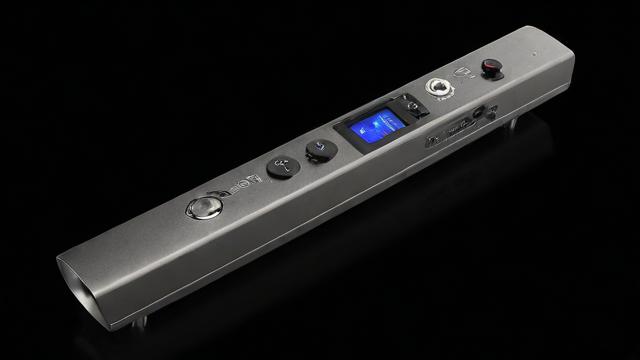ds1339c怎么用,DS1339C如何正确使用?
DS1339C是一款低功耗的实时时钟(RTC)芯片,它通过I2C总线接口进行通信,该芯片具有多种功能,包括时间计数、日期显示、闹钟设置和涓流充电能力,以下将详细介绍如何使用DS1339C:
一、硬件连接

1、引脚定义:DS1339C采用SOIC16封装,各引脚功能如下表所示:
| 引脚编号 | 名称 | 功能描述 |
| 1 | VCC/VDD | 电源电压(2.97V至5.5V) |
| 2 | GND | 接地 |
| 3 | SDA | I2C数据输入/输出 |
| 4 | SCL | I2C时钟信号 |
| 5 | NC | 未连接 |
| 6 | RST | 复位引脚,低电平有效 |
| 7 | X2 | 外部晶振连接端 |
| 8 | X1 | 外部晶振连接端 |
| 9 | A1F | 报警1标志位 |
| 10 | A2F | 报警2标志位 |
| 11 | A1IE | 报警1中断使能位 |
| 12 | A2IE | 报警2中断使能位 |
| 13 | A1M4 | 报警1分钟寄存器 |
| 14 | A2M4 | 报警2分钟寄存器 |
| 15 | A1M3 | 报警1小时寄存器 |
| 16 | A2M3 | 报警2小时寄存器 |
2、典型电路连接:在实际应用中,DS1339C通常与微控制器(如STM32)通过I2C总线连接,具体连接方式如下:
将DS1339C的SDA引脚连接到微控制器的I2C数据引脚(例如STM32的PB8)。
将DS1339C的SCL引脚连接到微控制器的I2C时钟引脚(例如STM32的PB9)。
将DS1339C的VCC引脚连接到电源(通常为3.3V或5V),GND引脚接地。
如果需要外部晶振,将X1和X2引脚分别连接到晶振的两个引脚。
二、软件配置
1、I2C接口函数配置:在使用DS1339C之前,需要配置I2C接口函数,以下是一个简单的例子,展示了如何设置和读取DS1339C的时间:
#include <time.h>
#include "DS1339_driver.h"
// 初始化I2C接口函数指针
static int (*ds1339_i2c_mem_write)(uint8_t reg_addr, uint8_t *data, uint8_t length) = NULL;
static int (*ds1339_i2c_mem_read)(uint8_t reg_addr, uint8_t *data, uint8_t length) = NULL;
// 设置时间函数
int ds1339_set_time(struct tm *time_struct) {
uint8_t buffer[7];
buffer[0] = time_struct>tm_sec;
buffer[1] = time_struct>tm_min;
buffer[2] = time_struct>tm_hour;
buffer[3] = time_struct>tm_mday;
buffer[4] = time_struct>tm_mon + 1; // 月份从0开始,所以加1
buffer[5] = time_struct>tm_year 1900; // 年份从1900年开始,所以减1900
buffer[6] = time_struct>tm_wday; // 星期几,从0开始计算
return ds1339_i2c_mem_write(0x00, 0x00, buffer, sizeof(buffer));
}
// 获取时间函数
int ds1339_get_time(struct tm *time_struct) {
uint8_t buffer[7];
int ret = ds1339_i2c_mem_read(0x00, 0x00, buffer, sizeof(buffer));
if (ret == 0) {
time_struct>tm_sec = buffer[0];
time_struct>tm_min = buffer[1];
time_struct>tm_hour = buffer[2];
time_struct>tm_mday = buffer[3];
time_struct>tm_mon = buffer[4] 1; // 月份从0开始,所以减1
time_struct>tm_year = buffer[5] + 1900; // 年份从1900年开始,所以加1900
time_struct>tm_wday = buffer[6]; // 星期几,从0开始计算
}
return ret;
}2、主程序示例:以下是一个使用上述函数的主程序示例:

#include <stdio.h>
#include <unistd.h>
#include <time.h>
#include "DS1339_driver.h"
int main() {
struct tm test_time = { .tm_sec = 55, .tm_min = 59, .tm_hour = 23, .tm_mday = 31, .tm_mon = 12 1, .tm_wday = 0, .tm_year = 2099 1900 };
struct tm read_time = { 0 };
// 设置时间
ds1339_set_time(&test_time);
printf("Time set successfully!
");
// 等待一段时间以确保时间更新
sleep(1);
// 读取时间并打印
ds1339_get_time(&read_time);
time_t time_sec = mktime(&read_time);
printf("Current time: %s", ctime(&time_sec));
return 0;
}三、常见问题解答
问题1:DS1339C的时间格式是什么?
答案:DS1339C支持两种时间格式:12小时制和24小时制,通过设置寄存器中的相关位来选择所需的时间格式,寄存器的B6位用于选择时间模式,当B6=1时为12小时模式,B6=0时为24小时模式,在12小时模式下,AM/PM位也会被设置。
问题2:如何设置DS1339C的闹钟功能?
答案:DS1339C具有两个可编程的闹钟功能,要设置闹钟,需要写入特定的寄存器,要设置第一个闹钟的时间,可以向地址0x07(秒)到0x0A(小时)写入相应的值,同样的方法适用于第二个闹钟,其寄存器地址从0x0B开始,需要注意的是,当更改12/24小时模式时,所有小时值(包括报警)都需要重新输入。
作者:豆面本文地址:https://www.jerry.net.cn/articals/7797.html发布于 2024-12-30 03:43:55
文章转载或复制请以超链接形式并注明出处杰瑞科技发展有限公司

